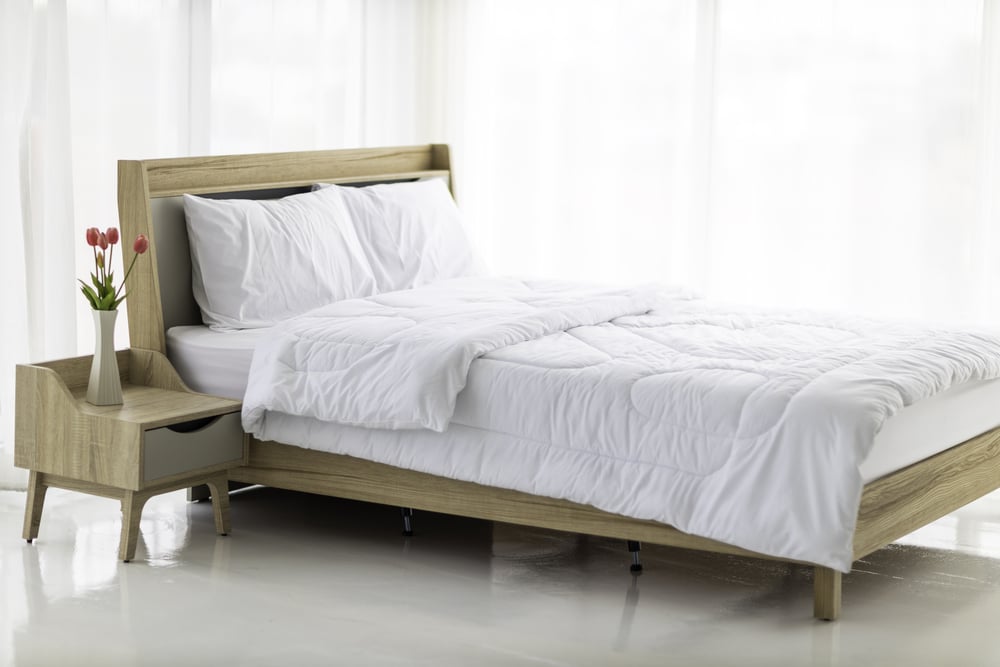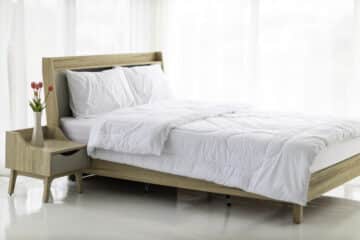

Have you ever seen a big piece of furniture in someone’s home and wondered how it fit through the doorway? Well, that furniture was probably shipped in several smaller boxes and assembled inside! That said, shipping furniture isn’t as simple as breaking a big piece down, getting a bunch of cardboard boxes, and hoping for the best. Whether you’re a custom furniture maker trying to reach more clients through eCommerce or you’re simply interested in reading more about how it works, this guide is all about how to ship furniture. We go over which carrier to choose for the most affordable rates, how to create packaging for custom furniture items, and how to save the most money on your shipping labels. Let’s break it down!
Table of Contents
- UPS is the Best Carrier for Shipping Large Pieces of Furniture
- Break Up Furniture Into Smaller Pieces & Create Your Own Cardboard Packaging
- Larger Pieces May Incur Surcharges for Exceeding Dimension Thresholds
- The Problem with Furniture Shipments and Shipping Insurance
- Save the Most Money on Furniture Shipments with Online Shipping Software
UPS is the Best Carrier for Shipping Large Pieces of Furniture
Far and away, UPS is the premier shipping carrier to choose for sending large furniture pieces. UPS allows you to send packages larger and heavier than what USPS allows for, and that gives you many more options when sending pieces that are too big to ship with the Postal Service.
While FedEx allows packages with similar sizes and weights as UPS, UPS services are almost always more affordable than FedEx. That makes UPS the best and most affordable option for sending furniture.
UPS Ground is the Most Affordable UPS Service for Sending Furniture
Out of all the UPS services to choose from, the one that will save you the most money is UPS Ground. UPS Ground allows you to send shipments up to 150 pounds, and you can ship a package up to 165 inches in length and girth combined.
For context, you can calculate a package’s girth with the following equation:
(2x width + 2x height)
Next, we’ll talk about breaking up your furniture into smaller pieces you can send via UPS Ground…and how to create custom outer packaging for them using corrugated cardboard sheets.
Break Up Furniture Into Smaller Pieces & Create Your Own Cardboard Packaging
As we hinted above, the name of the game for shipping furniture is to break the whole thing down into smaller pieces, and then create your own outer packaging with long corrugated cardboard sheets.
Why Should I Create Custom Outer Packaging?
We suggest creating your own outer packaging out of cardboard sheets because you probably won’t find any boxes that can fit the specific sizes of your furniture pieces once you break them down. Think of it like wrapping a present: you’ll use the cardboard sheets as your outer packaging layer and mold a box to the exact size of your items. Once you’ve wrapped it all up in cardboard packaging, you’ll want to use as much packing tape as possible to secure the box.
Where Can I Get Cardboard Sheets?
You can purchase cardboard sheets from your local box store (just run a Google search for “box store near me” and you’ll likely find one). You can also order them on websites such as ULINE or Boxes to Go.
When looking for them, try to find the biggest sheets you can. The bigger a sheet is, the easier it will be to cut it into the specific length you need for your pieces. 48 x 96″ sheets are always a good size to start with.
Use a Table Saw or a Box Cutter to Cut Cardboard Sheets into Your Outer Packaging
Cutting cardboard sheets into layers you can use for your outer packaging is where it gets tricky. Using a table saw will make your cuts as precise as possible, since you can feed several layers of sheets into the saw for accurate cuts that won’t vary.
If you don’t have access to a table saw or don’t know how to operate one, a box cutter will do just fine; just be sure to trace the lines you want to cut your sheets into before you do anything. Your packaging likely won’t be cut into 100% straight lines, but something is better than nothing! Plus, once you wrap it all up and seal it with packing tape, it won’t matter all that much.
Add Protective Layers in Between Furniture Pieces in a Single Package
If you’re placing multiple pieces of your furniture in a single package, you’ll want to add protective layers between all the different pieces. You use cardboard honeycomb panels or thick polystyrene sheets for this.
Pro Tip: Try to group your broken-down furniture pieces into as rectangular (or as square) of a shape as possible. This will make it easier for you to pack up and ensure that all of your items aren’t visible inside the box. It’s all about those easy, right angles!
Add Extra Protection to the Corners & Edges of Wooden Pieces
When sending wooden furniture, it’s also critical to add extra packaging material to the corners and edges. This is because the corners and edges of furniture pieces are typically where the most damage and chipping occurs.
As a starting point, check out these reinforced cardboard corner protectors for shipping.
Wrap Everything With Platic Stretch Wrap and Apply Your Outer Packaging
After you’ve bundled your pieces with your padded inner layers and corner protectors, it’s time to wrap it all together snugly. For this, you’ll want to use heavy-duty cast stretch wrap for shipping. The more layers you can add, the better, and don’t be afraid to make it as tight as possible. Then, tape the stretch wrap onto itself and start taping your outer packaging around the contents!
As you’re wrapping the outer packaging around your items, make sure that none of the parts of the furniture pieces are poking through the cardboard. If there are spots where you can see the furniture between the cardboard, cut another cardboard sheet and tape a new layer to that area!
Oh, and don’t forget to use heavy-duty shipping tape to hold your outer packaging in place. Lots and lots of shipping tape.
Larger Pieces May Incur Surcharges for Exceeding Dimension Thresholds
One thing to remember when sending large furniture shipments is that, due to the size of your packages, you may incur surcharges on top of your postage costs. This is true not only for UPS, but also for shipping with any other carrier.
We’ve listed some of the most common UPS surcharges you may see applied to large furniture shipments below.
Additional Handling Surcharges
UPS breaks down “Additional Handling” surcharges into the following sub-categories:
- Length + Girth: Applied when a package’s length (longest side) plus girth (2x height + 2x width) is more than 105 inches
- Longest Side: Applied when a package’s longest side is more than 48 inches
- Second Long Side: Applied when a package’s second-longest side is more than 30 inches
- Weight: Applied when a domestic package weighs more than 50 pounds (for international shipments, this applies when a package exceeds 55 pounds)
- Other: UPS may apply this surcharge for a variety of reasons, such as:
- Items inside a package aren’t fully encased in a cardboard container
- Outer shipping containers aren’t made of corrugated cardboard
- Outer shipping containers are covered in shrink wrap or stretch wrap
- A package’s outer packaging is wrapped too loosely or its contents are protruding out from inside
- The package is “irregular” or shaped like a cylinder (for instance, buckets, barrels, cans, drums, etc)
- The package’s shape requires it to be sorted through UPS’ irregular package sortation process (think packages with 1 inch or less in height)
- Any packages that require special handling
Large Package Surcharges
UPS applies the “Large Package Surcharge” to shipments that weigh (or have a dimensional weight of) over 90 pounds. UPS also applies this surcharge to packages whose length plus girth (2x width + 2x height) exceeds 130 inches, or to packages whose longest dimension is more than 96 inches.
There are two other types of Large Package Surcharges you may see for furniture shipments with UPS:
- Comm – Length: This applies to shipments going to commercial addresses weighing more than 90 pounds, the package’s length plus girth exceeds 130 inches, or the package’s longest side exceeds 96 inches
- Residential – Length + Girth: This applies to shipments going to residential addresses weighing more than 90 pounds, the package’s length plus girth exceeds 130 inches, or the package’s longest side exceeds 96 inches
The Problem with Furniture Shipments and Shipping Insurance
There’s one major downside to breaking down your furniture into several different boxes: you may not be able to protect your packages with shipping insurance.
Shipping insurance companies pay out claims based on invoices and transaction receipts of items. If your piece is all grouped in one box, it’s easy to declare the total value of the shipment based on your invoice or purchase receipt. However, if you have broken down your furniture into several different packages, it may be tricky to obtain insurance coverage, as the “total value” of your item is technically spread throughout several different boxes.
UPS includes up to $100 of carrier liability for each of label, so you may be able to receive a payout of up to $100 for a package that goes missing or arrives with damaged contents. That said, if you’re breaking up furniture into different shipping boxes, it may make filing an insurance claim with either UPS or a third-party provider difficult…unless you can provide a transaction receipt for the total value of the items contained in each box.
In our experience, the trade-off of breaking down a single piece of furniture into different boxes means forgoing any shipping insurance. That’s why packaging your items extra carefully is so important!
Save the Most Money on Furniture Shipments with Online Shipping Software
When you’re ready to send all of your boxes that contain different parts of your furniture piece, don’t go to the UPS Store! Instead, use online shipping software to buy UPS labels at the deepest discounts possible. In some cases, your label costs with shipping software can be up to 89% off what you’d pay to ship the same box at the UPS Store. For larger packages like boxes containing furniture, these discounts can save you hundreds of dollars on shipping costs!
On top of the discounts, shipping software companies also let you schedule a pickup where UPS will come get your packages from your office or home, and then scan them into their network. This way, you won’t need to worry about hauling your heavy boxes to your local UPS Store (and throwing your back out in the process).
Which Shipping Software Provider Should I Use?
There are a ton of different shipping software options out there, and some of them charge customers extra fees and monthly subscription costs to access UPS discounts. However, some of the companies that sell labels at pre-negotiated discounts don’t charge anything on top of the costs of the labels. These added fees and monthly costs can add up if you’re sending expensive packages like boxes containing different furniture pieces. That’s why it’s important to comb through all the different options and find the shipping software that lets you access these discounts for free!
Looking for the right shipping software for you?
To get the deepest discounts on UPS shipping labels, check out our guide:


Be the first to comment!